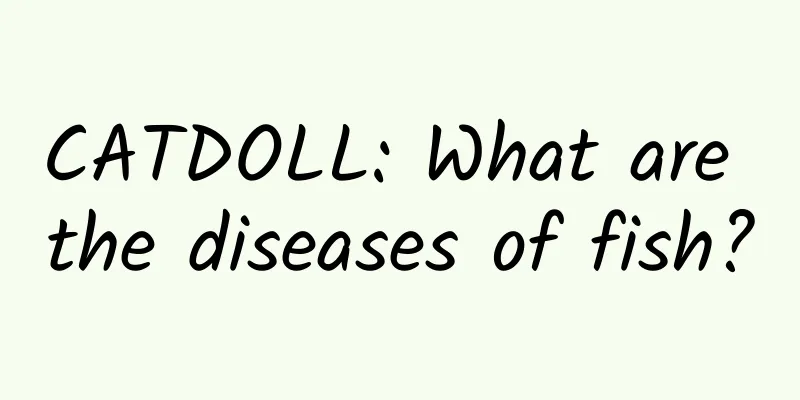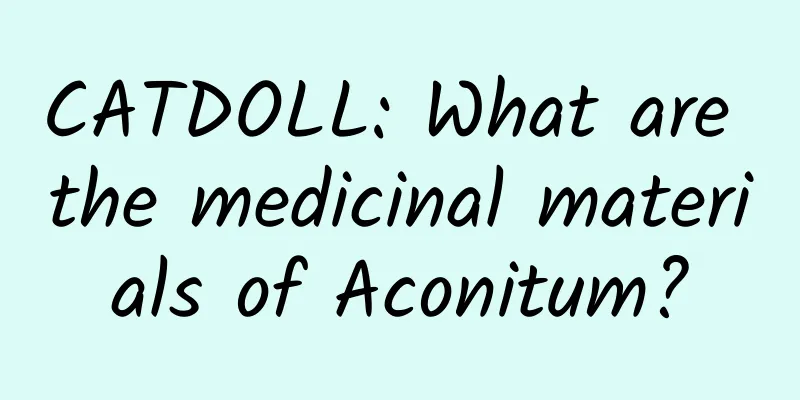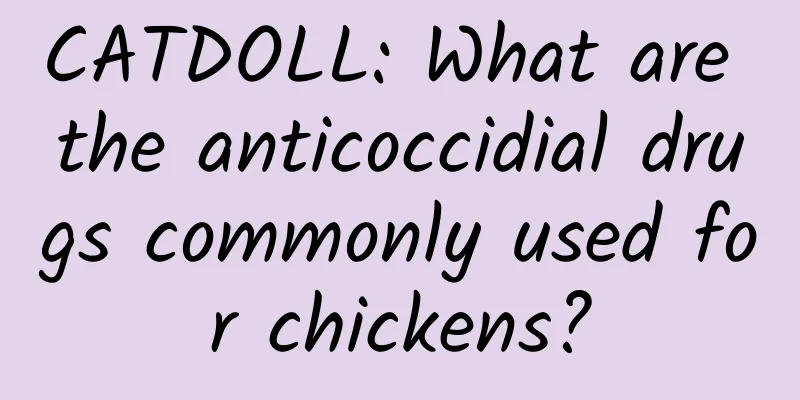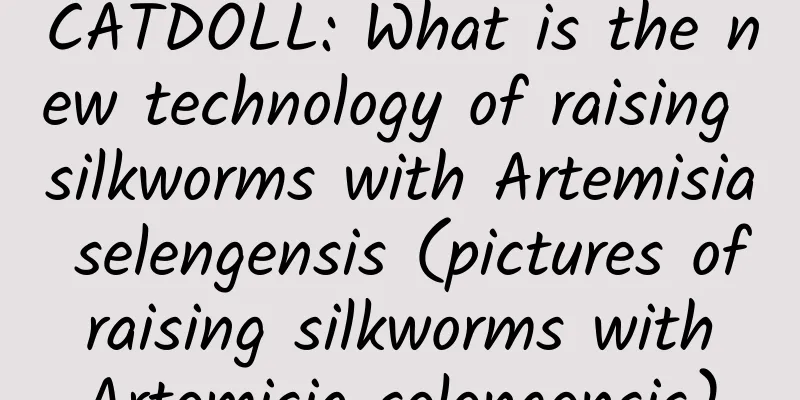CATDOLL : CATDOLL: What are the diseases of fish?

|
1. Smallpox The pathogen of smallpox is a viral infectious disease with a virus diameter of 0.07 to 0.1 microns, and is usually caused by infection with groups of spherical virus particles. In the early stage of the disease, milky white spots appear on the surface of the fish, which then thicken and grow larger, forming "growths" on the epidermis. The color gradually changes from milky white to waxy, and after growing to a certain extent, they fall off by themselves, but will grow again. When the number of "growths" is small, it will not cause much harm to the sick fish. If it spreads to most of the fish body, it will seriously affect the normal growth of the fish, make the fish thin, and affect the gonadal development of the parent carp. Epidemic situation: This disease is uncommon. Only carp is sensitive to it. The disease is not prevalent and the harm is not great. Prevention and treatment methods (1) Place the sick fish in clean or running water with high oxygen content for a period of time. The "growth" on the surface of the fish will gradually fall off and the fish will heal. (2) Spraying 0.4 to 1 gram of erythromycin per cubic meter of water throughout the pond has a certain effect on treating smallpox. 2. Carp edema disease Pathogens This disease is caused by dual infection of viruses and bacteria. The virus was initially diagnosed as carp spring virus. The main bacteria is Aeromonas punctata. The virus is the primary pathogen, the bacteria is the secondary pathogen, and the unfavorable environmental factors are the catalyst. disease (1) Acute type: In the early stage of the disease, the skin and internal organs of the fish have obvious hemorrhagic inflammation, the skin is red and swollen, and the sides and abdomen of the body are inflamed due to congestion and inflammation, and swollen red spots of different shapes and sizes appear; the base of the fins is inflamed, the tissue between the fin rays is destroyed, forming "rotten fins", the anus is red and swollen, the scales are erected all over the body, the gills are pale, and the whole body is swollen; as the disease progresses, the sick fish moves slowly, swims alone, swims sideways, sometimes lies quietly at the bottom of the water, has difficulty breathing, does not eat or move, and finally the tail fin becomes rigid, loses the ability to swim, and dies soon. Acute sick fish usually die within 2 to 14 days. (2) Chronic type: Initially, the skin surface becomes inflamed and hemorrhagic locally, the epidermis erodes, and the scales fall off, followed by the formation of ulcers, muscle necrosis, inflammation of adjacent tissues, redness and swelling, and sometimes local erect scales and congested fins. Some fish recover naturally, while others die from the disease. The chronic type has a long course of onset, which can last up to 45 to 60 days or even longer. Before death, there is often general edema, abdominal effusion, protruding eyeballs, and some fish have erect scales. Edema occurs in most areas of my country, mainly affecting 2-3 year old carp, and is most prevalent during the carp spawning and hatching season. The mortality rate of carp in diseased fish ponds can reach 45%, up to 85%, and the mortality rate of carp in adult fish breeding ponds can also reach more than 50%. Prevention and treatment methods (1) Strictly prevent fish from getting injured. Injured fish cannot be used as broodstock, and injured fish should not be raised together with healthy fish. (2) The spawning pond should be cleaned of sludge and disinfected with bleach or quicklime. (3) Use 50 grams of chloramphenicol per cubic meter of water to soak the sick fish for 24 hours. (Chloramphenicol is a banned fishery drug.) (4) For sick carp weighing 150 to 400 grams, inject 3 mg of oxytetracycline. (5) Add 1.8 g of oxytetracycline to each kilogram of bait to make granular bait. Feed 1.5 kg of granular bait to every 50 kg of fish every day for 8 consecutive days. (6) Apply 1/20000 potassium permanganate to the affected area to accelerate wound healing and reduce bacterial infection. Fish hemorrhagic disease [1] Fish intestinal diseases 1. Enteritis Enteritis is also called rotten intestinal plague and aconite plague. The pathogen is aeromonas punctata. The bacteria are short rods with round ends, single or several connected, with a single flagellum at the extreme end, and have the ability to move. disease The sick fish moves slowly, does not eat, has a swollen abdomen, and turns black, especially the head. There is a lot of body fluid, and the intestinal wall is congested and reddish brown. There is no food in the intestine, only a lot of light yellow mucus. If not treated in time, the sick fish will die soon. Prevalence This disease is one of the most serious diseases in farmed fish. It is very common in grass carp and black carp, especially grass carp of the current year and grass carp of one year old. The mortality rate is very high, generally up to about 50%. It occurs in all fish farming areas across the country. The epidemic season and degree of incidence in different places vary with climate changes and the level of breeding management. In a year, this disease has two obvious epidemic seasons. May to June is mainly the season for 1-2 year old grass carp and black carp, and August to September is mainly the season for grass carp of the current year. At the same time, this disease is often complicated by bacterial gill rot, and the epidemic area is very wide. Prevention and treatment methods (1) Sprinkle 1 gram of bleaching powder per cubic meter of water throughout the pond. (2) Feeding garlic: Mash the garlic and make a bait containing 100 grams of garlic per 0.5 kilograms. Feed the bait once a day for 3 consecutive days. (3) Feeding sulfaguanidine: For every 50 kg of fish, use 5 grams of the drug on the first day, and 2.5 grams of the drug on the 2nd to 6th days. Make it into powder and feed it once a day for 6 consecutive days. (4) For every 100 kg of fish, mix 250 g of Fish Fu Kang A with feed and feed twice a day, morning and afternoon, for 3 consecutive days. Chinese medicine for treating enteritis 1. Chinese herbal medicine: Herba Lycopodii, Purslane, Amaranthus oleraceus, Polygonum hydropiper, etc. For every 100kg of fish, use 1kg of Chinese herbal medicine, add 200g of salt, mix with feed and feed for 3 consecutive days for effective results. 2. Andrographis paniculata: use 2kg for every 100kg of fish, add 200g of salt, mix with feed and feed it for 3 consecutive days for effectiveness. 3. Houttuynia cordata: use 1 kg of Houttuynia cordata for every 100 kg of fish. After decocting, take the juice and mix it with bait for administration. [Care and Prevention] Fish species should be stocked in time, at a reasonable density, and the "four eliminations and four determinations" should be strictly implemented. Clean water should be added regularly, the aerator should be turned on, and quicklime should be sprinkled throughout the pond to keep the water weakly alkaline and sufficient dissolved oxygen. The water quality should be clean, and the water depth should be increased in summer to keep the water temperature change small. The water temperature should not be too high. Four disinfections: fish pond disinfection, fish species disinfection, bait and tool disinfection, and water body disinfection. Four determinations: feeding bait must be of certain quality, quantity, location and timing. Prevention and treatment The main measures adopted include scientific stocking, improving fish disease resistance, controlling pathogens and applying drugs. Scientific stocking The water source of the fish farm should be sufficient, clean and unpolluted, and the physical and chemical properties of the water should be suitable for the habits of fish. For this reason, the fish pond should be independently supplied with water from the water inlet channel, and new water should be added regularly. The pond water cannot be discharged into other fish ponds to prevent the spread of fish diseases. When stocking fish, mixed breeding of multiple fish can reduce the incidence of parasitic diseases that only occur in a certain type of fish; close breeding without too high a density can both ensure a certain unit area yield and prevent fish from being too closely contacted, resulting in highly contagious pathogens. Feeding should be of certain quality, quantity, location and timing. The fish condition should be checked regularly, and weeds, leftover bait, dead fish and intermediate hosts of parasites in the pond should be removed to prevent the occurrence and spread of diseases. Improve fish disease resistance Fish can be given immunity by injecting or taking vaccines orally, spraying them with vaccine aerosols, or immersing them in vaccine liquid. Vaccines are generally made by isolating pathogens from the lesions of diseased fish, culturing them in large quantities, and then inactivating them. Sometimes, they can also be made by directly grinding the organs of diseased fish, filtering out the residue, and inactivating the filtrate. Breeding disease-resistant fish species through artificial selection or hybridization is an active means of preventing fish diseases. Controlling pathogens Before stocking fish, the pond should be cleaned, that is, drain the water, remove the mud on the bottom, expose to the sun, and remove the weeds around the pond to eliminate pathogens and parasites. Quicklime, bleaching powder, tea cakes, etc. can also be sprinkled into the pond for drug cleaning. The aquatic grass bait and manure, fish feeding places and breeding tools should be disinfected with bleaching powder before feeding or use. In order to prevent the international spread of pathogens, imported and exported fish must be quarantined. China has formulated the "Regulations of the People's Republic of China on Import and Export Animal and Plant Quarantine" and the "Interim Regulations on Freshwater Fish Quarantine at Ports", which define the scope, objects, methods and treatment methods of quarantine. Pathogens that are extremely harmful to fish and lack effective prevention and control methods, such as infectious pancreatic necrosis virus in salmon and trout, and Myxosoma cerebralis that causes whirling disease, are listed as the main quarantine objects. Administering medication The drugs used to prevent and treat fish diseases mainly include halogens (bleaching powder, sodium chloride, iodine, etc.), heavy metal salts (copper sulfate and ferrous sulfate, copper chloride, potassium dichromate, etc.), sulfonamides (sulfadiazine, sulfathiazole, sulfaguanidine, etc.), furans (nitrofurazone, furazolidone, etc., banned fishery drugs), organophosphorus insecticides (trichlorfon, etc.), antibiotics (penicillin, streptomycin, chloramphenicol, chlortetracycline, oxytetracycline, erythromycin, etc.), Chinese herbal medicines (tung oil, rhubarb, garlic, ground ivy, amaranth, etc.), and other bactericidal dyes such as malachite green and methylene blue, quicklime, sulfur, borax, potassium permanganate, etc. There are usually four methods of applying medicine: ① Hanging bag (basket) method. Hang the bag or basket containing the medicine in the water around the feeding table or feeding area of the fish pond to form a drug action area. The fish will automatically enter and exit the area within the tolerable drug concentration range and be affected by the drug to kill the pathogens on the body surface and gills. It is generally used for prevention or early treatment. Copper sulfate and ferrous sulfate are often used to hang bags to prevent and control grass carp wheelworm disease, Chinese mullet disease, etc., and bleaching powder is used to hang baskets to prevent and control red skin disease and gill rot of black carp and grass carp. ② Dipping method. Immerse the fish in a container with a high concentration of medicine and force the drug to be administered in a short time, thereby killing the pathogens on the fish body surface or gills without harming the fish itself. Commonly used salt concentration of 2% and furazolidone concentration of 20ppm are used to prevent and control myxobacterial white head and white mouth disease, gill rot disease, etc., and potassium permanganate concentration of 10-20ppm is used to prevent and control trichodinasis and ringworm disease. ③ Sprinkling method. It is the most commonly used method. That is, use a concentration of medicine that has a killing effect on a certain pathogen but is safe for the fish itself, and sprinkle it all over the fish pond to kill the pathogens on the fish body surface, gills and water. When using this method, the volume of the pond water and the amount of medicine must be accurately calculated. A mixture of 0.5ppmm copper sulfate and 0.2ppm ferrous sulfate is commonly used to treat wheelworm disease, fish beanworm disease, tricholoma disease, Chinese mullet disease, etc.; a concentration of 2.5-3.75ppm rhubarb is used to treat myxobacterial whitehead and whitemouth disease, gill rot, etc.; a concentration of 0.25-0.5ppm crystal trichlorfon is used to treat ringworm disease, mullet disease, etc. ④ Oral method. Mixing the drug in the bait to make palatable particles to feed the fish is a drug prevention and treatment method for visceral organ diseases. Raw garlic, salt, and sulfaguanidine are commonly used to prevent and treat enteritis in black carp and grass carp, and a mixture of sulfathiazole or sulfur powder and iodine tablets is used to prevent and treat coccidiosis in black carp. ⑤ Injection method. For example, vaccines can be used to prevent some viral or bacterial fish diseases, and penicillin and streptomycin can be injected to treat printing disease and postpartum injuries in grass carp, silver carp and bighead carp broodstock. 11 Chinese Herbal Medicines for Preventing and Treating Fish Diseases 1. Gallnut: Use 2D3 grams of Gallnut decoction per cubic meter of water and sprinkle it all over the pond to prevent and treat fish white skin disease, red skin disease and gill rot. 2. Calamus: Use 4D5 kilograms of Calamus and Castor oil per mu of water surface, crush them into a slurry, soak them for a while, and then sprinkle the residue and juice all over the pond to prevent and treat fish enteritis, gill rot and red skin disease. 3. Verbena: Use 0.5 kg each of verbena and plantain for every 100 kg of fish, add appropriate amount of water and boil for 30 minutes. Take the juice and mix it with rice sugar, then knead it into a ball and put it on the feeding table. Feed it for 5 to 6 days in a row to prevent and treat enteritis in grass carp and black carp. 4. Garlic: Use 1 kg of garlic for every 50 kg of fish, mash it into juice, mix it with feed and feed it once a day for 3 to 6 days. It can prevent and treat enteritis in various fish. 5. Castor: Use 15 kg of fresh castor leaves or young branches per acre of water surface, fold them into several small bundles and place them around the bait table. Use it twice in a row to prevent and control fish ergot. 6. Masson pine: Use 15 kg of fresh Masson pine leaves per acre of water surface, grind them into powder and sprinkle them into the pond with 25 kg of water; or feed the fish with 500 g of crushed Masson pine needles and 50 g of salt for every 5 kg of fish, which can prevent and treat fish red skin disease, gill rot and enteritis. 7. Willow leaves: Use 10-15 kg of fresh willow leaves per acre of water surface, tie them into bundles and put them into the water. Replace the leaves after they rot. This can cure grass carp enteritis, gill rot and red skin disease. 8. Ginger: Use 6 kg of ginger, 6 kg of maple leaves, 1.8 kg of mulberry leaves, and 5 kg of camphor leaves per acre of water surface. Mix and boil the juice for 2 hours. Add 0.6 kg of pig blood and 1.2 kg of salt and sprinkle it throughout the pond to treat bacterial gill rot of grass carp. 9. Chili: Use 0.25 kg of chili powder and 0.5 kg of fresh ginger per acre of water surface, add 10 kg of water to make spicy ginger soup, add 15 kg of cold water and sprinkle it throughout the pond to cure Ichthyophthirius vulgaris disease in fish. 10. Tobacco leaves: Use 0.5 kg of tobacco leaves per acre of water surface, add water and boil for 2 hours, take the juice and spray it all over the pond, it can cure fish enteritis, gill rot and red skin disease. 11. Chives: For every acre of water surface and 0.8 meters deep, use 2.5 kg of chives, chop them into pieces, add 0.2 kg of salt, mix with the feed and feed it once a day for 5 consecutive days to treat grass carp enteritis. "8 Dos and 8 Don'ts" for Fish Disease Prevention and Control 1. It is better to prevent disease before you get sick than to seek medical treatment after you get sick. The early symptoms of the disease in fish are not easy to observe. By the time they are discovered, the sick fish have often eaten very little or stopped eating, making it difficult to use medication. 2. Take preventive measures regularly and avoid taking precautions against others. Fish diseases have a certain periodicity. For example, fish are prone to Saprolegniasis in early spring and late autumn when the water temperature is low, grass carp and black carp are prone to the old "three diseases" in early summer and mid-autumn, and the high water temperature in summer is the peak season for outbreaks of fish diseases. Based on this regularity of fish disease occurrence, we can take preventive measures in advance. 3. Comprehensive prevention is recommended and single medication should be avoided. Fish diseases are the result of a combination of factors. Therefore, fish disease prevention must target various pathogenic factors and take comprehensive measures to inhibit pathogens, improve the water environment, and enhance fish disease resistance. This includes thorough pond cleaning, fish disinfection, regular water injection and application of quicklime, scientific fertilization and feeding, and regular internal and external treatments. 4. Low-temperature disinfection is recommended and high-temperature medicinal baths should be avoided. Medicinal bathing is an important method for preventing and treating fish diseases. It is usually carried out in wooden barrels or basins when fish are raised in low temperature seasons. This method is very harmful in summer because the water temperature is high and the effect of the medicine is enhanced. 5. It is advisable to rotate medications and avoid using a single medication. If only one drug is used to prevent and treat diseases in water bodies, various pathogenic bacteria and parasites in fish will develop drug resistance, reducing the effectiveness of the drug. We should actively promote the rotation of mixed drugs, but acidic and alkaline drugs should not be mixed. 6. It is advisable to take the medicine at the right time and avoid taking it at any time. The effect of fish medicine, especially the effect of spraying the whole pond, is closely related to water mixing, dissolved oxygen, light, etc. High water temperature, rich dissolved oxygen, and strong light can speed up the effect of the medicine, improve the efficacy, and reduce the side effects of the medicine. Therefore, the prevention and treatment of the medicine should be carried out in the afternoon on a sunny day. 7. It is advisable to use the medicine in appropriate amounts and avoid increasing the dosage randomly. The dosage of various fish medicines is determined after many tests, which can effectively prevent and treat fish diseases with little side effects. If used in excess, it will not only increase the cost, but also may cause drug damage. 8. It is advisable to use non-metallic containers to store soluble drugs, and avoid using metal containers. Fish medicines are mostly chemically synthesized drugs, which are not very stable in chemical properties and are easy to react chemically with metals, causing changes in composition and properties. Therefore, containers made of non-metallic materials such as ceramics, wood, and plastics should be used to store and dissolve fish medicines. |
<<: CATDOLL: Jellyfish breeding rack?
>>: CATDOLL: Where can I buy squid strips wholesale in Hepu, Beihai
Recommend
CATDOLL: What is the difference between the Chinese soft-shell turtle and the golden coin turtle?
What is the difference between the Chinese soft-s...
CATDOLL: How long is the breeding cycle of golden cicadas? (How long is the breeding cycle of golden cicadas?)
1. How many seasons are there in a year for the C...
CATDOLL: Calculation method and importance of feed-to-meat ratio for broiler chickens
Broiler feed conversion ratio (FCR) is one of the...
CATDOLL: What insects can be raised in cow dung?
1. What insects can be raised with cow dung? Cow ...
CATDOLL: What types of cicada flowers are there?
Golden cicada flower You Jin is cicada flower, sc...
CATDOLL: Common abnormal phenomena and treatment methods in farming white shrimp
Abnormal phenomenon 1: Before stocking, the pond ...
CATDOLL: The most effective way to get rid of ants (The most effective way to get rid of ants)
1. What is the most effective way to get rid of a...
CATDOLL: The latest technical regulations for bee breeding and management (the latest technical regulations for bee breeding and management)
1. What are the techniques and methods of beekeep...
CATDOLL: What is the best season to plant cicadas?
1. When is the best season to transplant golden c...
CATDOLL: How many loaches can be raised in one acre of land?
One acre of land can raise 400,000 to 500,000 loa...
CATDOLL: What are some ways to preserve red worms so that they don't die for a long time? (What are some ways to preserve red worms so that they don't die for a long time?)
1. How to keep red worms alive permanently? There...
CATDOLL: Does raising snails have an impact on Feng Shui? Why do they die? (Does raising snails have an impact on Feng Shui? Why do they die?)
1. What is the meaning of keeping snails at home?...
CATDOLL: What fish is the most suitable for co-breeding whiteleg shrimp in high-level intensive ponds? Which marine fish feeds exclusively on shrimp feces and mud?
1. What fish is the most suitable for co-breeding...
CATDOLL: Why do crabs shed their shells?
Why do crabs need to shed their shells? The ball ...
CATDOLL: What should I do if there are ants in the flower pot?
When cultivating plants in life, if ants appear i...









